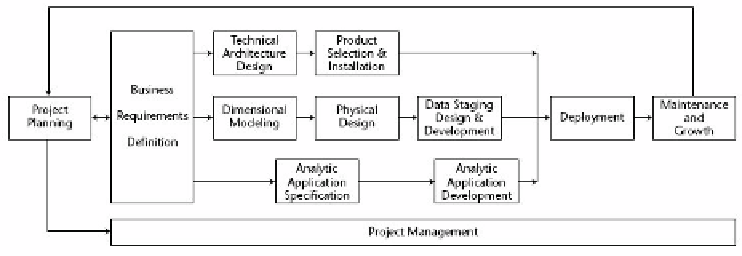Information Technology Reference
In-Depth Information
•
Disclose information indicators dashboards through electronic platforms
situated and ubiquitous devices;
•
Help make the best decision at the right time, anywhere and at anytime;
•
Create an intelligent alert system able to notify administrators about some
major changes in the data dashboards.
3
Material and Methods
For the development of this work it was followed Kimball methodology to design the
Data Warehouse and to build the PBI prototype.
3.1
Kimball Methodology
Kimball [10] defends a Bottom-Up approach. He defends that, after the most
important business indicators, Data Marts are created first. They will provide a more
refined view of organizational data. Kimball [11] defines the DW as "a copy of
transaction data specifically structured for query and analysis." This organizational
modelling focuses on the user's ease of access and provides a high level of
performance for the DW. Kimball methodology is known for Dimensional Lifecycle
Business and analysed following three forms. One of that defines the project itself:
determines the shape of project management and explains which steps the tasks need
to follow in order to be able to properly implement a data warehouse (figure 1).
Fig. 1.
Kimball Methodology[11]
As can be seen, the Kimball methodology starts with the Project Planning. For this,
it was proposed the Readiness Litmus Tes that fits this project and focuses on the
following points: 1) Manager with integrated executive powers in the company that
will define the projects objectives, as well as ensure all necessary resources for their
development; 2) Business motivation; 3) The partnership between the University of
Minho and the company management; 4) The analytical culture of the organization;
5) Projects technical feasibility.
Despite the five points, there are two more important for the success of the project:
the analytical culture of the organization against the decision taken and the projects

Search WWH ::

Custom Search